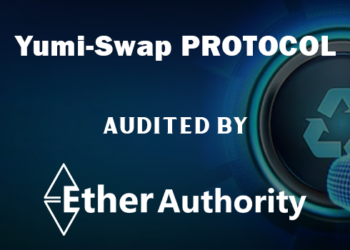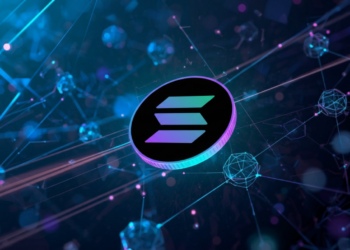In the world of blockchain and cryptocurrencies, Chainlink (LINK) has carved out a distinct niche as a decentralized oracle network. As blockchain technology continues to disrupt industries across the globe, its limitations in accessing real-world data present a significant hurdle for developers. This is where Chainlink steps in, providing a secure and reliable way for smart contracts to interact with external data sources.
In this article, we will explore Chainlink (LINK), its unique role in the blockchain ecosystem, its key features, and how it contributes to the growth of decentralized finance (DeFi) and beyond.
What Is Chainlink (LINK)?
Chainlink is a decentralized oracle network that aims to connect smart contracts with real-world data, APIs, and payment systems. While blockchain technology provides a secure and transparent ledger for transactions, it doesn’t inherently have access to external data, such as price feeds, weather data, or information from traditional finance systems. This is where Chainlink plays a crucial role.
Chainlink allows smart contracts to securely interact with real-world data by using “oracles,” which are entities that fetch and verify information from external sources. These oracles then relay this data back to the smart contract, enabling it to execute based on real-world conditions.
The native cryptocurrency of the Chainlink network is called LINK, which is used to pay for services on the platform, incentivize node operators, and reward those who provide reliable and accurate data.
Key Features of Chainlink
- Decentralization:
One of the most important aspects of Chainlink is its decentralized nature. By using a network of independent oracles, Chainlink eliminates the risk of a single point of failure, which could lead to manipulation or data corruption. This decentralized setup ensures the integrity and reliability of the data being fed to smart contracts. - Security:
Security is a critical factor when it comes to interacting with external data. Chainlink employs multiple layers of security to ensure that the data fetched by oracles is accurate, tamper-proof, and resistant to hacks. Chainlink uses cryptographic proofs and reputation systems to ensure that only trusted oracles are providing data. - Scalability:
Chainlink is designed to scale with the growing demand for decentralized applications (dApps). It has the capacity to handle a large volume of requests, ensuring that smart contracts can access real-world data in real-time without performance issues. - Multiple Data Sources:
Chainlink supports a wide variety of data sources, including APIs, data feeds, and traditional banking systems. This flexibility allows developers to create smart contracts that interact with a diverse range of real-world information, from asset prices to weather patterns. - Verifiable Randomness:
Chainlink offers a service called Verifiable Random Function (VRF), which provides a way to generate random numbers in a verifiable manner. This is particularly useful for applications in gaming, lotteries, and any use case that requires randomness to be proven publicly. - Cross-Chain Compatibility:
Chainlink is not limited to a single blockchain platform. It can operate across various blockchain ecosystems, including Ethereum, Binance Smart Chain, and others. This cross-chain functionality makes Chainlink a valuable tool for multi-chain interoperability.
How Does Chainlink Work?
At its core, Chainlink connects smart contracts with external data sources through a network of decentralized oracles. Here’s a step-by-step look at how it works:
- Smart Contract Request:
A smart contract on a blockchain requests external data through a Chainlink node. This could be anything from asset prices to sports results. - Oracle Selection:
Chainlink selects one or more oracles to fulfill the data request. These oracles are chosen based on their reputation and reliability. - Data Fetching:
The chosen oracles retrieve the requested data from the relevant sources, such as APIs, websites, or other systems outside the blockchain. - Data Verification:
The oracles validate the data to ensure its accuracy. This could involve using multiple sources to cross-check the data and applying cryptographic proofs. - Data Delivery:
Once the data is verified, it is sent back to the smart contract, which can now execute its functions based on the real-world information. - Reputation System:
Chainlink uses a reputation system to track the performance of oracles. Reliable oracles are rewarded with LINK tokens, while unreliable oracles face penalties. This system ensures that only trustworthy oracles participate in the network.
Chainlink’s Role in Decentralized Finance (DeFi)
Chainlink has become a critical component of the DeFi ecosystem. Many DeFi applications rely on Chainlink’s oracles to access real-world data, such as asset prices, interest rates, and liquidity information. Without reliable data, DeFi protocols would be vulnerable to manipulation and incorrect calculations.
For example, decentralized exchanges (DEXs) rely on accurate price feeds from Chainlink to determine the value of assets. Similarly, lending platforms use Chainlink’s oracles to ensure that collateral ratios are calculated based on up-to-date market prices.
By providing accurate, real-time data, Chainlink enables DeFi protocols to operate securely and efficiently, reducing the risk of smart contract exploits and ensuring that users can trust the platform.
Chainlink and Smart Contracts: A Powerful Combination
Smart contracts are self-executing contracts with the terms of the agreement directly written into code. They operate autonomously, eliminating the need for intermediaries. However, smart contracts can only execute based on the data available within the blockchain. This limitation is addressed by Chainlink’s decentralized oracle network.
By using Chainlink’s oracles, smart contracts can access external data and execute actions based on real-world conditions. This opens up new possibilities for industries such as insurance, supply chain management, gaming, and healthcare, where smart contracts need to respond to real-time data.
For instance, a smart contract for crop insurance could automatically trigger a payout if weather data from Chainlink’s oracles confirms that a drought has occurred in the specified region. Similarly, a gaming application could use Chainlink’s random number generator (VRF) to ensure fair gameplay.
The LINK Token: What Is It and How Does It Work?
The LINK token is the native cryptocurrency of the Chainlink network. It is primarily used to pay for services on the platform, such as oracle services, and to reward node operators for providing accurate data. LINK tokens are also staked by node operators to ensure they act honestly and provide reliable data.
In addition to its use in the Chainlink network, LINK has become a popular asset for investors. Its value has seen significant growth as the demand for decentralized oracles and Chainlink’s services continues to rise. LINK tokens can be bought and sold on various cryptocurrency exchanges, making it accessible to both developers and investors.
Chainlink’s Impact on Blockchain Ecosystem
Chainlink’s innovative approach to solving the blockchain’s “oracle problem” has had a profound impact on the ecosystem. By enabling smart contracts to interact with real-world data, Chainlink has unlocked new use cases for blockchain technology. It has become an essential tool for developers building decentralized applications and has facilitated the growth of the DeFi sector.
Moreover, Chainlink’s decentralization and security features have made it a trusted provider of data for industries outside of DeFi, such as insurance, gaming, and supply chain management. As more industries adopt blockchain technology, the demand for decentralized oracle networks like Chainlink will only continue to grow.
Conclusion: The Future of Chainlink
Chainlink has emerged as a foundational technology in the blockchain space, providing a secure and reliable way for smart contracts to interact with external data. With its decentralized network of oracles, Chainlink solves the critical problem of data access for blockchain applications.
As the blockchain ecosystem continues to expand, Chainlink is well-positioned to play a key role in the development of decentralized applications and the broader decentralized finance ecosystem. Its ability to provide verifiable, tamper-proof data will continue to make it an essential tool for developers and enterprises alike.
Whether you’re a developer building the next big decentralized application or an investor looking to get involved in the blockchain space, Chainlink and its LINK token offer significant opportunities in this rapidly evolving industry. Keep an eye on this innovative technology—it is likely to play a pivotal role in the future of blockchain and decentralized applications.
Join Us : Twitter | Website | GitHub | Telegram | Facebook | YouTube























